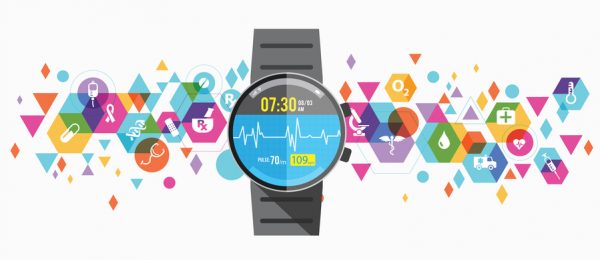
Healthcare has been moving steadily out of the clinic and into the home. McKinsey estimates that as much as $265 billion in care (nearly a quarter of all Medicare spending) could shift from facilities to homes by 2025. From sleep monitors to glucose trackers to connected devices that support chronic condition management, patients and caregivers are now bringing healthcare technology into their kitchens, bedrooms, and living rooms.
The technology itself may be sophisticated, but what often gets overlooked are the human moments around it. Unboxing a new device, wrestling with instructions (sometimes written like IKEA directions), and making sense of the first alerts or reminders. These are the touchpoints where trust is either built or lost, and they rarely show up in the usage logs.
We see this dynamic play out every day on TikTok and YouTube, where “unboxing” videos rack up millions of views for everything from sneakers to skincare. People are fascinated by the first encounter with a product such as the packaging, the instructions, the ease (or frustration) of getting started. Healthcare devices may never go viral in the same way, but the principle still applies: the unboxing is often the first, and most memorable, impression.
Right now, most feedback loops stop at the provider or the machine. Devices can send information back to a physician, but that data doesn’t explain how the experience felt. Did the instructions make sense? Did the setup feel empowering or overwhelming? Was the caregiver able to support the patient with confidence? Without that context, healthcare teams miss the very details that shape adherence, satisfaction, and long-term outcomes.
Capturing the lived experience
Newer research approaches are helping fill the gaps traditional reporting misses: what it actually feels like to bring a device into the home.
Patients and caregivers can keep what I refer to as “modern-day diaries,” logging short entries each time they use a device, whether triggered via an event notification from an app, prompted by a text notification or simply when something noteworthy happens. Online communities allow people to share those experiences over time, creating an ongoing dialogue that shows how early impressions shift with regular use. And conversational tools, including AI-driven prompts, make it possible to explore not just what happened but also how it felt.
These methods capture the small but important moments, such as confusion with setup, the sense of relief when an alert works, or even frustration when instructions don’t make sense. These moments can ultimately decide whether a device becomes part of someone’s routine or gets set aside.

Integrating GLP-1s: How Berry Street is Redefining Nutrition Care
Richard Fu details the company's approach to nutrition therapy and strategy for patients using GLP-1s.
These kinds of insights are also valuable to payers and regulators. They provide a clearer picture of usability, education gaps, and caregiver burden, without crossing into promotional territory. They help brands refine support materials, reduce barriers to adherence, and demonstrate real-world value in ways that traditional surveys or machine data alone cannot.
How research approaches need to change
To keep pace with healthcare’s shift into the home, insights teams should rethink their approach:
- Listen in real time. Use mobile-first methods so patients and caregivers can share reactions as they happen. A short diary entry captured during setup, or a quick note after the first alert, will be far more revealing than feedback collected weeks later when details are already blurred.
- Capture the caregiver voice. Many experiences live with caregivers, not patients. Bringing them into feedback loops highlights barriers that rarely show up in clinical data. For example, a daughter managing her mother’s medical device might explain that she was more stressed by navigating the carrier portal than by the condition itself. For her, the burden wasn’t necessarily the disease management, it was the day-to-day struggle with poorly designed systems.
- Focus on emotions, not just functions. AI-enabled conversational research can surface whether instructions create reassurance or confusion, or whether alerts feel helpful or stressful. A patient might describe the first notification from a glucose monitor as “more alarming than the condition itself,” underscoring how design choices shape not only behavior but also trust.
- Create ongoing communities. Longitudinal feedback across weeks or months can reveal how first impressions evolve with continued use. A small frustration, like a charger that feels flimsy, may fade once a routine is established, while other issues, such as confusing alerts, can compound over time and lead to abandonment.
- Benchmark and optimize. Comparing results against industry norms turns qualitative feedback into actionable strategy. Tracking whether onboarding is smoother than average, or if instructions fall short of peers, gives teams concrete targets for improvement and a clearer way to demonstrate return on experience.

How Lantern Delivers ROI Through Smarter Healthcare Navigation
Dickon Waterfield discusses why Lantern's navigation works.
As care continues to shift into the home, these lived moments such as unboxing, setup, trial and error and real-time usage are becoming as important as what happens in the clinic. If we want devices to succeed outside the clinic, we need to start listening inside the home, where trust, confidence, and habits are actually formed.
Photo: exdez, Getty Images
Dara St. Louis is the EVP of Reach3 Insights, a full-service consultancy specializing in conversational insights. With over 20 years of experience in market research, Dara is a leader in CPG, tech, retail, and experiential insights, known for driving innovation and team empowerment through creative, tech-accelerated solutions in qualitative, quantitative, and community-based research.
This post appears through the MedCity Influencers program. Anyone can publish their perspective on business and innovation in healthcare on MedCity News through MedCity Influencers. Click here to find out how.







